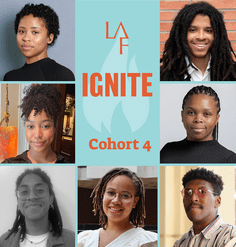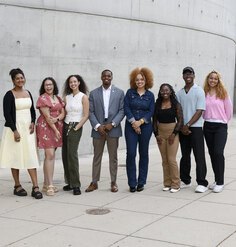Olmsted Scholar Feature: A Little Dreamer: Paper Airplanes and Sustainability
By Qiyi Li, 2014 University Olmsted Scholar
Paper airplanes connect us with childhood dreams and memories through individual attachments that are unique to one’s personal experiences. My undergraduate independent honors project was a month-long art installation in the five-story atrium of the Iowa State University College of Design Building during December 2013. The work was originally scheduled to be in place for only one week, but Design College Dean Luis Rico-Gutierrez was so impressed that he requested an extension to a full month so that the installation became the setting for the fall semester graduation ceremony.
Professor Michael Martin from the Department of Landscape Architecture served as my honors project advisor, providing advice and support during the conceptual and developmental stages of the project. I installed the project over a period of several days during the week of Thanksgiving break.
Initially inspired by artist Dawn Ng’s “I Fly Like Paper,” my installation responded to its architectural frame as these airplane “vectors” connected each of the atrium’s four balconies to the opposite wall near the ground level. I strung 634 paper airplanes on nearly invisible fishing line catenaries, linking one side of the atrium with the other through gracefully descending arcs. These arcs provided a counterpoint to the narrow and vertical atrium; the introduction of this new geometry created fresh perspectives on the experience of the rectilinear space from multiple levels and a variety of viewpoints. The planes themselves were static and yet they implied motion. Viewers experienced a diversity of psychological responses because of the dynamic aesthetic variations caused by point of view and varying by time of day since the building’s full-length barrel vault skylight allows sunlight into the atrium.
Finally, the medium is the message: the 634 paper airplanes were made from sheets of paper discarded from the Design Building’s printing lab. The number of planes reflected the number of trees worldwide that are cut for paper mills every five seconds, based on the rate of four billion trees per year. This was our very own waste paper, dive-bombing its way into our collective consciousness, forcing us to visualize our personal and quotidian contribution to a problem of abstractly global dimensions. The installation utilized public art as a medium to highlight environmental issues and to raise public awareness of paper recycling and sustainable conservation practices.
The installation received recognition and honors from both inside and outside the College. My project was one of three recipients of the university’s “Live Green Award for Excellence in Sustainability” in 2014, and was the only individual (as opposed to team) project among the awardees. I was invited to present the project for the “Symposium on Undergraduate Research and Creative Expression,” in order to increase public awareness of resource waste. The project has also inspired other interventions: After I graduated, similar “airspace” projects have appeared in the atrium space, transforming an overlooked “empty” architectural void into a vital ground for public art.
For more information, visit:
http://lib.dr.iastate.edu/cgi/viewcontent.cgi?article=1054&context=undergradresearch_symposium
Qiyi Li graduated Magna Cum Laude with a Bachelor of Landscape Architecture degree and a secondary major in Environmental Studies from Iowa State University with University Honors. Qiyi is currently continuing her studies in the Master of Landscape Architecture post-professional degree program at the Harvard Graduate School of Design.










